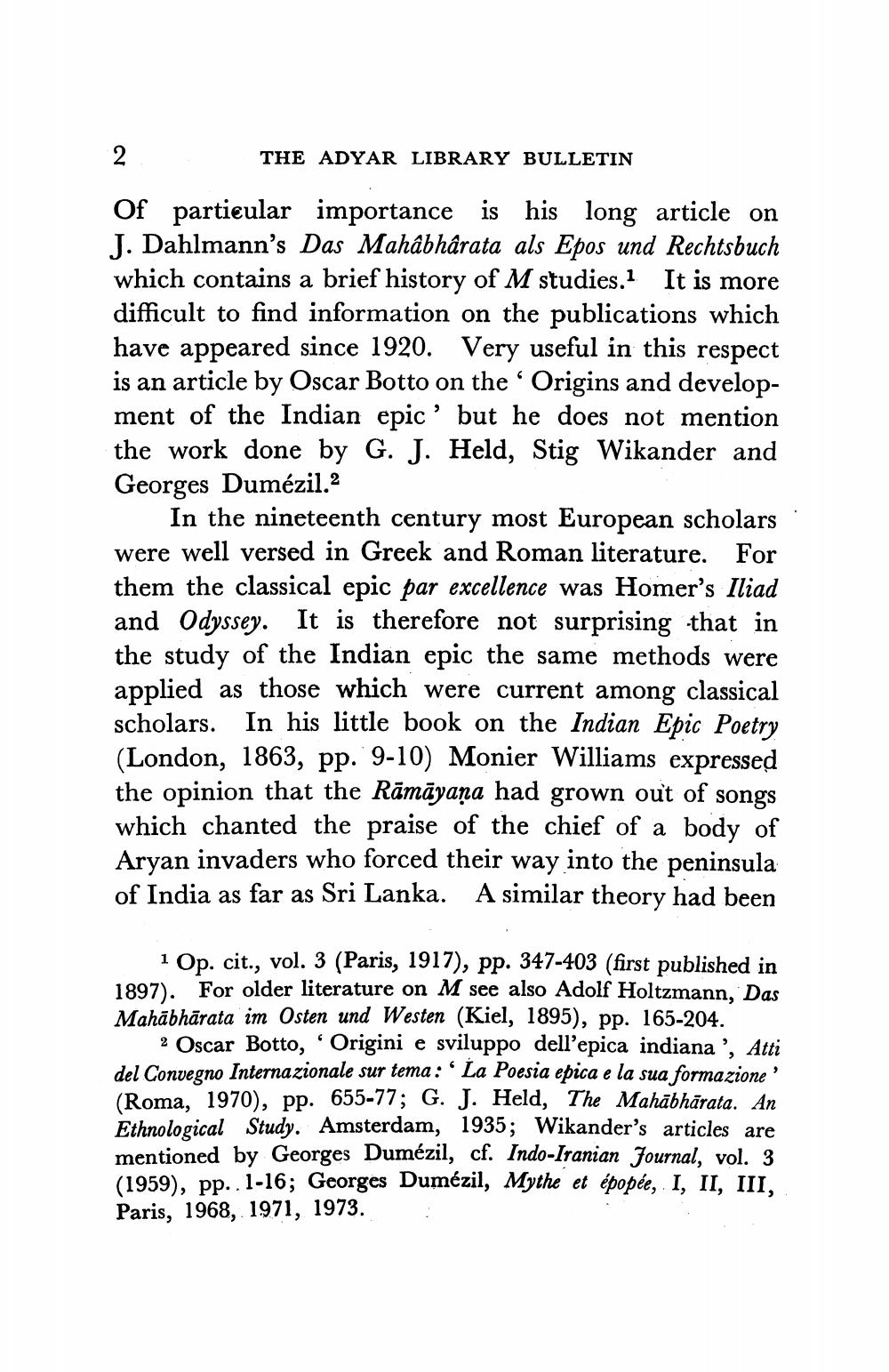________________
2. THE ADYAR LIBRARY BULLETIN Of particular importance is his long article on J. Dahlmann's Das Mahâbhârata als Epos und Rechtsbuch which contains a brief history of M studies. It is more difficult to find information on the publications which have appeared since 1920. Very useful in this respect is an article by Oscar Botto on the Origins and development of the Indian epic' but he does not mention the work done by G. J. Held, Stig Wikander and Georges Dumézil.2
In the nineteenth century most European scholars were well versed in Greek and Roman literature. For them the classical epic par excellence was Homer's Iliad and Odyssey. It is therefore not surprising that in the study of the Indian epic the same methods were applied as those which were current among classical scholars. In his little book on the Indian Epic Poetry (London, 1863, pp. 9-10) Monier Williams expressed the opinion that the Rāmāyaṇa had grown out of songs which chanted the praise of the chief of a body of Aryan invaders who forced their way into the peninsula of India as far as Sri Lanka. A similar theory had been
1 Op. cit., vol. 3 (Paris, 1917), pp. 347-403 (first published in 1897). For older literature on M see also Adolf Holtzmann, Das Mahābhārata im Osten und Westen (Kiel, 1895), pp. 165-204.
2 Oscar Botto, Origini e sviluppo dell'epica indiana ', Atti del Convegno Internazionale sur tema: ‘La Poesia epica e la sua formazione (Roma. 1970), pp. 655-77; G. J. Held, The Mahābhārata. An Ethnological Study. Amsterdam, 1935; Wikander's articles are mentioned by Georges Dumézil, cf. Indo-Iranian Journal, vol. 3 (1959), pp. . 1-16; Georges Dumézil, Mythe et épopée, I, II, III, Paris, 1968, 1971, 1973.




